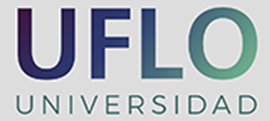EL ENFOQUE ECOLÓGICO DE LAS REPRESENTACIONES SOCIALES
Abstract
Se trata de destacar los orígenes y configuraciones ecológicas del sistema de
representaciones mentales, caracterizando los aspectos ecosistémicos secuenciales dependientes de la estructura profunda de significados vitales, sobre los cuales se propone se sostienen los dos sistemas humanos de representaciones, uno el sistema por imágenes, el cual es analógico, continuo, concreto e implícito, y el otro el sistemaverbal-proposicional, el cual es convencional-arbitrario, discreto, abstracto y explícito.
Se compara cómo los dos sistemas humanos se muestran evolutivamente integrados y de mayor complejidad simbólica que el supuesto sistema de representación animal o el sistema de representación diferencial que es propio de cada especie, según su acción y dominio sobre el hábitat, todos los cuales son sistemas de representación que muestran compartir y reflejar junto con el humano una forma de representación espacial tipo “mapa cognitivo” comprensivo del entorno, forma básica de representación que por su origen es necesariamente ecológica, ya que le permite al animal desplazarse, buscar alimento o depredar dentro de su medio o hábitat vital sin pérdida del sentido del propósito o de la orientación espacial buscada, el que es expresado a través de la sucesión coherente de sus acciones y movimientos congruentes con las condiciones físicas del entorno.
Published
How to Cite
Issue
Section
The authors who publish in this journal accept the following conditions:
1. The authors retain the copyright and assign to the journal the right to first publication, with the work registered under the Creative Commons Attribution license, which allows third parties to use what has been published as long as they mention the authorship of the work and the first publication in this journal.
2. Authors may make other independent and additional contractual agreements for non-exclusive distribution of the version of the article published in this journal (e.g., inclusion in an institutional repository or publication in a book) provided that they clearly indicate that the work was first published in this journal.
3. Authors are permitted and encouraged to publish their work on the Internet (e.g., on institutional or personal pages) before and during the review and publication process, as this may lead to productive exchanges and greater and faster dissemination of published work (see The Effect of Open Access).









